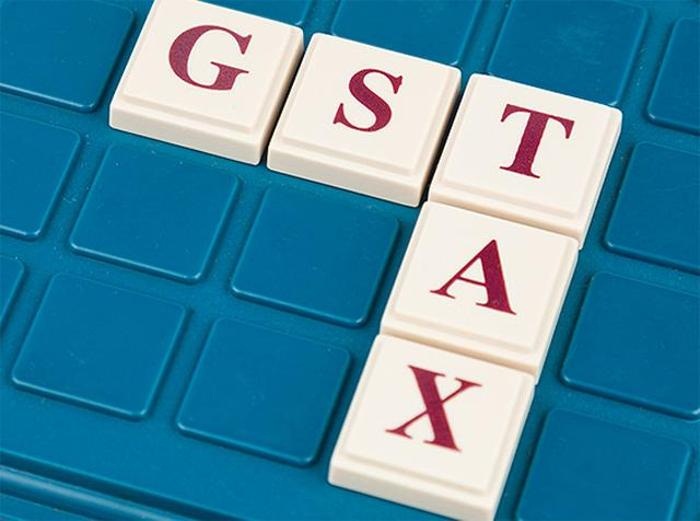The recent Fortis case brings to light the gross extent to which medical patients in India can be exploited and the new GST regime has only made them more vulnerable. Under the grand projections of India as the next big medical tourism destination, lies the ugly truth that more than 60{ac15f71130453b01de68f6caab5e777d0a5c121b68e3ce09334b989286c5d23b} of its own population cannot afford basic healthcare. While only 30{ac15f71130453b01de68f6caab5e777d0a5c121b68e3ce09334b989286c5d23b} of the population is covered by medical insurance, public and private put together, studies have concluded that health care expenses cause “catastrophic expenditure” and drastically alter the standard of living to push more than 60{ac15f71130453b01de68f6caab5e777d0a5c121b68e3ce09334b989286c5d23b} of households under the poverty line. Even insurance only provides security in the bracket of Rs. 30,000 to Rs. 3,00,000, which doesn’t even cover 10{ac15f71130453b01de68f6caab5e777d0a5c121b68e3ce09334b989286c5d23b} of the costs in critical cases like cancer, organ transplants, or heart surgeries.
In the light of these truths, the standardised taxation system introduced by the government earlier this year, was supposed to bring some relief. In the midst of the confusion prevailing around GST in health care, most people believed in the government’s blanket statement that healthcare and education services are exempted from GST altogether. This turned out to be not entirely true. Most are now beginning to discover how the benefit is undone by an increase in taxes on medicinal goods and equipments, thereby increasing the overall medical bills for everyone.

How do your medical bills change under GST?
While healthcare services like hospital rooms and doctor’s fee are exempted from GST, medicines, diagnostic equipment and disposables are taxed. GST on formulations (tablets, capsules and liquids) has been bracketed at 12{ac15f71130453b01de68f6caab5e777d0a5c121b68e3ce09334b989286c5d23b} marking an increase of 2.30{ac15f71130453b01de68f6caab5e777d0a5c121b68e3ce09334b989286c5d23b} (earlier VAT + excise duty amounted to around 9.5{ac15f71130453b01de68f6caab5e777d0a5c121b68e3ce09334b989286c5d23b}).
While the Custom Department’s Gazetted List of Medicines which include some basic antibiotics, paracetamols, blood pressure and diabetic medicines etc. are exempted completely, the more comprehensive National List of Essential Medicines (NLEM) prepared by the Ministry of Health in accordance to the World Health Organisation’s List of essential medicines which includes medicines for Malaria, HIV, diabetes and tuberculosis are taxed at 5{ac15f71130453b01de68f6caab5e777d0a5c121b68e3ce09334b989286c5d23b} replacing the earlier VAT of 5{ac15f71130453b01de68f6caab5e777d0a5c121b68e3ce09334b989286c5d23b} showing no change in price. Thus, you should expect an increase the prices of medicines or no change in prices for treating anything that is not common cold or flu.
The standardization of taxes has also wiped out state subsidies that made certain treatments cost lesser in certain parts of the country. For example, insulin, a crucial treatment for the ever increasing diabetic patients in India was exempted from VAT in Tamil Nadu, but under GST falls in the 5{ac15f71130453b01de68f6caab5e777d0a5c121b68e3ce09334b989286c5d23b} tax bracket once more. Even though public health remains under the state list, most states now will be unable to prioritize and subsidize healthcare for problems that affect them the most.
Medical equipments have also been included under a higher GST bracket. Most of these equipments are needed for diagnosis and the treatment of some rampant problems like kidney and heart diseases.
Let’s examine the case of dialysis. More than 2 lakh patients suffer from kidney related diseases annually out of which only 6000 -7000 end up getting a transplant. Which leaves the rest on dialysis support. Dialysis equipment like the machine, tubings, needles, fluid, plasma filter etc are all taxed at 12{ac15f71130453b01de68f6caab5e777d0a5c121b68e3ce09334b989286c5d23b} (instead of the earlier VAT of 5{ac15f71130453b01de68f6caab5e777d0a5c121b68e3ce09334b989286c5d23b}. This has led to an estimated increase of Rs. 300 per session for patients. A patient who needs an average of say 10 – 12 sessions a month will have to now pay around Rs. 40,000 extra annually for dialysis.
Similar estimates occur for heart patients, where GST on lead valve pacemaker and CRT-ICD have been increased from 5.5{ac15f71130453b01de68f6caab5e777d0a5c121b68e3ce09334b989286c5d23b} to a drastic 18{ac15f71130453b01de68f6caab5e777d0a5c121b68e3ce09334b989286c5d23b}! Moreover surgical disposables like gloves, syringes etc. are now taxed at 12{ac15f71130453b01de68f6caab5e777d0a5c121b68e3ce09334b989286c5d23b} (earlier were taxed between 2 – 5.5{ac15f71130453b01de68f6caab5e777d0a5c121b68e3ce09334b989286c5d23b}).
Other facilities like thermometers, hospital beds, examination chairs etc are taxed at 18{ac15f71130453b01de68f6caab5e777d0a5c121b68e3ce09334b989286c5d23b} making all of it much more expensive for most hospitals.
Moreover, another clause puts everything that isn’t specifically mentioned under current GST brackets, under the 18{ac15f71130453b01de68f6caab5e777d0a5c121b68e3ce09334b989286c5d23b} slab, making many subsidiary things costlier. For instance, hospital food services are not taxed at all. However, the caterer rent to the proprietor will be taxed at 18{ac15f71130453b01de68f6caab5e777d0a5c121b68e3ce09334b989286c5d23b}, which of course the hospital will charge from the caterer, and the caterer will charge from the patient, indirectly transferring the burden to the patient.
Who will bear these costs?
Even with a non-profiteering clause in place (but ambiguous in practice), as in the above case the ‘extra’ taxes will in the end reflect on the patient’s bill. Experts suggest that eye operations will get at least 15{ac15f71130453b01de68f6caab5e777d0a5c121b68e3ce09334b989286c5d23b} costlier and cancer treatment costs will increase by 12{ac15f71130453b01de68f6caab5e777d0a5c121b68e3ce09334b989286c5d23b}. Already the import of certain crucial equipment for diagnosis and treatment of cancer is taxed heavily, increasing cancer costs for patients who according to this Business Today article deplete all of their life’s savings paying for cancer treatment, but with GST this has only gotten worse as this hospital in Ernakulam found out when it was asked to pay 20{ac15f71130453b01de68f6caab5e777d0a5c121b68e3ce09334b989286c5d23b} additional GST amounting to Rs. 1.4 crores on a equipment needed for radiotherapy.
With medical insurance not providing adequate remedies and increasing cost of treatment, patients have started looking for alternative ways to afford health care such as loans and crowdfunding. But, are the costs justified?
The reality of private healthcare in India
Charging Rs. 16 lakhs to treat a case of dengue, as Fortis did, might sound utterly dystopian however, overpriced medical treatments at private hospitals is a reality that doesn’t shock (or anger) us anymore. Recently, The Quint reported that a leading private hospital in Delhi was providing different budgets for the same treatment, based on the room one chooses to rent in the hospital. While various states like West Bengal and now Karnataka have drafted bills to curb expenses at private hospitals (and received a lot of flak for it from doctors) they haven’t still been very effective in setting a strict threshold on how far can private hospitals push costs for basic treatments.
Adding to this abysmal state of expenses incurred by private health care, increased taxes under GST will turn into yet another excuse for private facilities to up their costs. “We are still examining the impact GST will have on the healthcare industry. We can say that if the costs increase by something like 2 per cent we, the private sector, most of us – may be able to absorb that without impacting patients. However if it is 3-4 per cent or even higher then we will have to pass it on to patients,” the Chief of Apollo Hospitals told The Indian Express confirming that in the end it will be the patient who must absorb the costs.
A final word
Reducing taxes on certain infrastructure and equipment for essential treatments for cancer and heart diseases and ensuring that these benefits reach the people would have been the ideal route to take in the new GST scheme (as was also promised by the Government) but instead the current application of taxes ensures that taxes are not collected directly from the patient on paper but reach him indirectly through other routes, a practice that will prove to be much more dangerous than a direct GST on health care.





